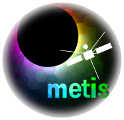Speaker
Description
The combination of the H I Ly$\alpha$ (121.6 nm) line formation mechanism with white-light and ultraviolet (UV) Ly$\alpha$ observations provides an effective method for determining the electron temperature of coronal mass ejections (CMEs). A key to ensuring the accuracy of this diagnostic technique is the precise calculation of theoretical Ly$\alpha$ intensities. This study performs a modelled CME and its driven shock via the three-dimensional numerical magneto-hydrodynamic simulation. Then, we generate synthetic UV images of the CME and shock to quantify the impact of different assumptions on the theoretical Ly$\alpha$ intensities, such as the incident intensity of the solar chromospheric Ly$\alpha$ line ($I_{disk}$), the geometric scattering function ($p(\theta)$), and the kinetic temperature ($T_{n}$) assumed to be equal to either the proton ($T_p$) or electron ($T_e$) temperatures. Through comparing relative variations of the Ly$\alpha$ intensities of the CME and shock under these assumptions, we find that: (1) Using the uniform or Carrington maps as input for $I_{disk}$ underestimates the Ly$\alpha$ intensity (with relative errors below 10%) compared to the Real-time map, but the Carrington map yields better results than the uniform disk. (2) Neglecting the geometric scattering process leads to a relatively symmetric influence, with an error reversal interface at a latitude of approximately $40^{\circ}$. The Ly$\alpha$ intensity is overestimated above this latitude and underestimated below it. The relative errors increase with heliocentric distance, but do not exceed 10%. (3) Compared to the assumption $T_n=T_p$, using $T_{n}=T_e$ leads to more complex relative errors in CME Ly$\alpha$ intensity. The CME core and void are almost overestimated, with maximum values exceeding 50%. In the CME front, both overestimates and underestimates exist with relative uncertainties of less than 35%. However, the electron temperature assumption has a smaller impact on the shock, with an underestimated relative error of less than 20%.

